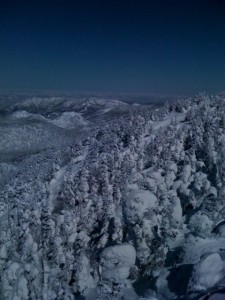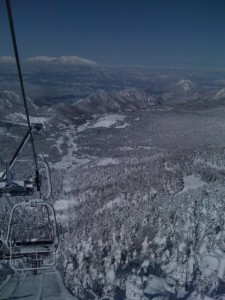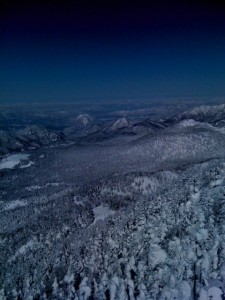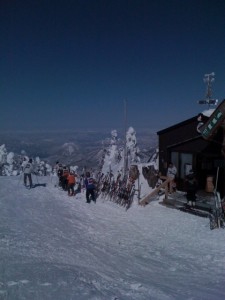While it snows an average of once or twice a winter in Tokyo, with snowfall maxing out at five cm. on average, the city is largely unprepared for the impact of the precipitation and the aftermath of the storm can be quite amusing. Trains stop, though subways do not, and traffic grinds to a halt. Highways and airports close for the duration.
Last week we had about three cm. fall in a pretty short amount of time. It was a wet, freezing, mix of precipitation that made walking, the most common and popular mode of transportation in the city, nearly impossible.
My son, who attends the American school in Japan (ASIJ) got out of school at 1pm and got on his bus. He arrived near our house, but not at his usual bus stop (the bus couldn’t attempt the hill) at 5:30pm. He was on a bus for over four hours because of traffic. Luckily the bus drivers and high-school-aged monitors stop the bus at intervals for bathroom breaks and snack breaks. The whole afternoon and evening were just a mess.
The next day was when things got funny. On my way to teach the following morning I watched as the Japanese employed a myriad of methods for snow removal. I did see a few people with regular shovels, but not many. Some people were trying to break ice with a dustpan then throw the offending mass of wet and snow into a bucket for later disposal. Some people used the sharp end of a mop to break up the ice and then sweep it away. These poor people were literally bent over their instruments of removal furiously cutting up and tossing masses into drifts on the side of their homes so as not to offend or inconvenience neighbors.
The funniest thing to me, though, as a born and bred New Englander, were the hoses. Somehow people in Japan think that by putting water on the ice and snow, they can wash it away. Of course this presupposes sun exposure so the concrete can dry during the day and not re-freeze overnight, which is often the case. The snow itself melts all day, but the water re-freezes into black ice that people don’t see and trip over regularly. It’s terrible to see the women in heels who think that the snow is gone but don’t think about the ice. Not good at all.
But the snow and ice rarely last more than 72 hours because the weather really is generally too warm to preserve it, so the treachery is over quickly, thank goodness.
Next time it snows in your neck of the woods, think HOSE. Or not.




